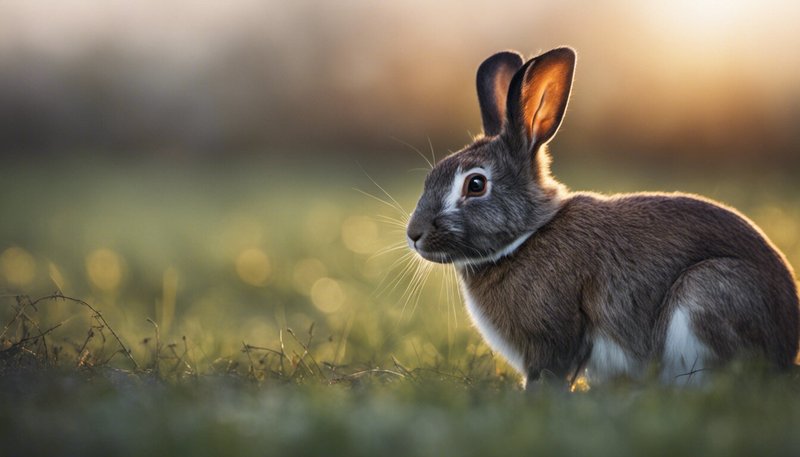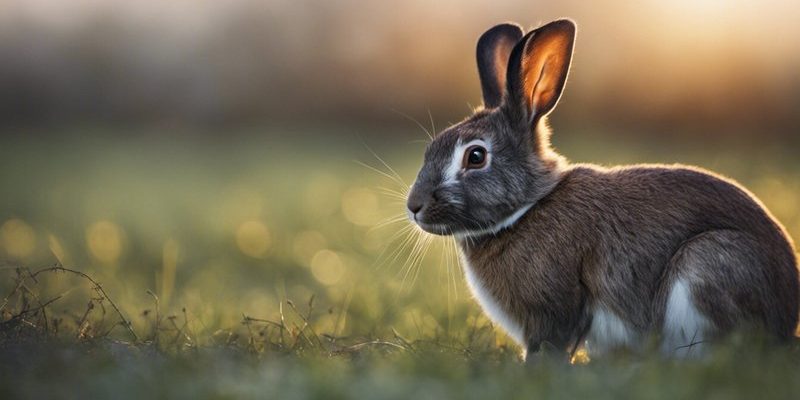
Rabbits aren’t just a symbol of spring or cute pets we see in our backyards; they play a critical role in our ecosystems. They help maintain the balance of their environments. Yet, as humans, we constantly alter landscapes through urban development, agriculture, and pollution, putting these little creatures at risk. So, let’s dive into the world of rabbits and explore which species are endangered, the reasons behind this, and what conservation efforts are in place to protect them.
Understanding Rabbit Species and Their Habitats
There are over 30 different species of rabbits around the world, and they occupy diverse habitats ranging from dense forests to open grasslands. Some common types include the European rabbit, the American cottontail, and the domestic rabbit. Each species has unique adaptations and plays a specific role in the ecosystem. For instance, the European rabbit is a keystone species, meaning its presence is crucial for the survival of other animals.
Habitat plays a significant part in a rabbit’s survival. They thrive in areas that provide cover from predators and access to food. However, urbanization and land conversion for agriculture are erasing many of these habitats. When their homes disappear, rabbits have fewer places to hide and less food to eat. This makes them more vulnerable to extinction.
You might be wondering why some species are more at risk than others. The conservation status of rabbits varies widely, with some considered least concern and others listed as endangered. For example, the Amami rabbit, found only on a couple of Japanese islands, is critically endangered due to habitat loss and introduced predators.
Factors Contributing to Rabbit Endangerment
A variety of factors threaten rabbit species worldwide. Here are some of the most significant:
- Habitat Loss: One of the leading causes. As more land is developed for agriculture and urban expansion, rabbits lose their natural homes.
- Predation: In some areas, invasive species like cats and foxes can severely impact rabbit populations, making it hard for them to thrive.
- Climate Change: Changes in climate can affect food availability and habitat quality, putting additional stress on these animals.
- Pollution: Pesticides and pollutants can affect not only rabbits but also their food sources, leading to declines in health.
Honestly, it’s a tough world out there for rabbits. They don’t just compete with other species for resources; they also have to contend with human activities that make their lives even harder. Whether it’s cars on roads or hunters in fields, rabbits face a myriad of challenges.
Global Conservation Efforts for Rabbits
Despite the challenges, many organizations and governments are stepping up to protect rabbit species. Conservation efforts often focus on habitat restoration, legal protections, and public awareness campaigns.
Restoration projects aim to bring back the natural environments that rabbits depend on. This might include replanting native vegetation or controlling invasive species that threaten rabbit populations. For example, in some areas of Europe, conservationists are working to restore traditional farming practices that create mixed landscapes—perfect for both wildlife and agriculture.
Legal protections also help safeguard endangered rabbit species. Laws can regulate hunting and habitat destruction, giving rabbits a better chance to recover. In the U.S., laws under the Endangered Species Act have been vital for protecting certain rabbit populations, allowing for restoration efforts to take flight.
Public awareness campaigns are equally important. They educate people about the plight of rabbits and what they can do to help. Simple actions like building rabbit-friendly gardens or supporting local conservation groups can have a big impact.
Case Studies: Endangered Rabbit Species
Let’s focus on a few rabbit species that are on the endangered list, to give you a clearer picture.
The Amami Rabbit
This rabbit is native to Japan and is critically endangered. It lives primarily in the subtropical forests of Amami Oshima Island. The main threats include habitat loss and predation by introduced species, like feral cats and mongoose. Conservationists are focusing on habitat protection and restoring its natural ecosystem.
The Pygmy Rabbit
Found in the sagebrush steppe of the Pacific Northwest, the pygmy rabbit is one of the smallest rabbit species in the world. It’s considered endangered due to habitat destruction from agriculture and urban development. Conservationists are working on breeding programs and habitat restoration to help increase its numbers.
The Volcano Rabbit
This rabbit is unique to Mexico and lives in high-altitude areas near volcanoes. It’s threatened by habitat loss due to urban expansion and agriculture. Efforts are underway to preserve its unique habitat through the creation of protected areas and ecological corridors.
The Role of Education and Community Involvement
Education plays a powerful role in conservation. When communities understand the importance of preserving rabbit populations, they’re more likely to join the effort. Schools, local organizations, and even social media campaigns can spread the word about endangered rabbits and what individuals can do to help.
Community involvement is key, too. Programs that engage local people in conservation efforts often see better outcomes. For instance, residents can help monitor rabbit populations or participate in habitat restoration projects. When people feel a personal connection to their local wildlife, they’re more inclined to protect it.
You might be surprised to hear how effective these grassroots initiatives can be. Involving local voices not only helps raise awareness but also builds community pride and responsibility towards local wildlife.
What Can You Do to Help?
So, what can you do to contribute to rabbit conservation? Here are some practical steps:
- Support Local Conservation Groups: Find organizations working to protect rabbit habitats and donate or volunteer.
- Advocate for Green Spaces: Encourage your local government to protect natural habitats and create more parks.
- Educate Others: Share what you learn about endangered rabbits with friends and family.
- Participate in Citizen Science: Some programs allow people to contribute observations of wildlife in their area, which can be valuable for conservation efforts.
You might not see the immediate impact of these actions, but every little bit helps. Conservation is often a long, slow process, but together, we can make a significant difference.
Final Thoughts: The Future for Rabbits
The future for many rabbit species hangs in the balance. While some populations face serious threats, there is hope. Global conservation efforts are gaining momentum, and with continued awareness and action, we can help protect these important creatures.
Rabbits may seem like small players in the grand scheme of wildlife conservation, but they are vital to their ecosystems. By understanding the challenges they face and advocating for their protection, we contribute to a healthier planet. So, next time you spot a rabbit in your garden or a park, remember—there’s a lot more at stake for these little creatures than meets the eye. Let’s keep working to ensure they have a bright future ahead.

